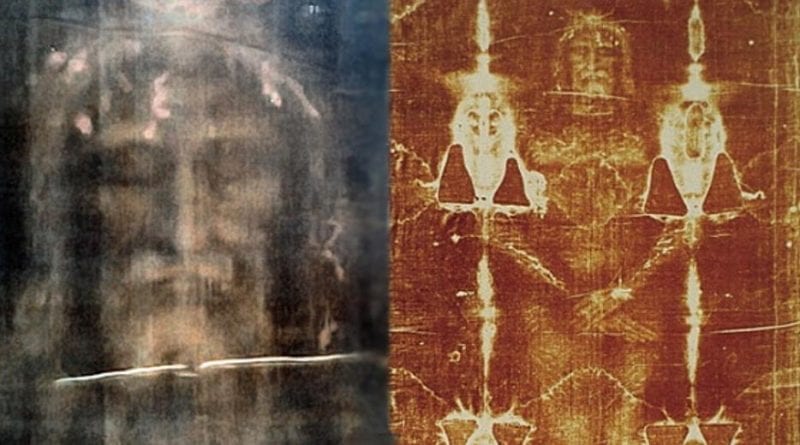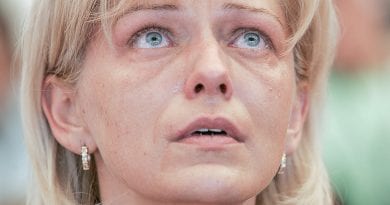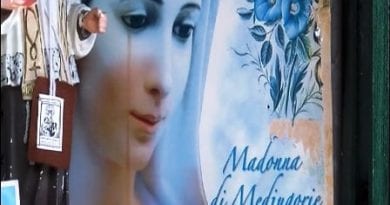Breaking News – New Prestigious Study on Shroud of Turin…”There is blood of a man tortured and killed”
Follow Mystic Post on Facebook
Shroud, new study: there is blood of a man tortured and killed. Published in a US scientific journal new findings by Cnr and University of Padua. Electron Microscopy to analyze a pristine fiber: found creatinine and ferritin iron nanoparticles, typical in cases of severe polytrauma
ANDREA TORNIELLI
ROME
The Shroud of Turin, the linen cloth that according to an ancient tradition, wrapped the body of Jesus after crucifixion, actually came into contact with the blood of a dead man who suffered many serious injuries. This is what emerges from a research on a fabric fiber extracted from the dorsal imprint of the cloth, around the feet area. The study was conducted by two CNR institutes, the Istituto Officina dei Materiali (IOM-CNR) in Trieste and the Institute of Crystallography (IC-CNR) in Bari, together with the Department of Industrial Engineering of the University of Padua, the latter uncovered the news with a statement. An article detailing the discovery findings and measurements was published in the American journal PlosOne and titled “New Biological Evidence from Atomic Resolution Studies on the Turin Shroud”.
“We performed reproducible atomic resolution Transmission Electron Microscopy and Wide Angle X-ray Scanning Microscopy experiments studying for the first time the nanoscale properties of a pristine fiber taken from the Turin Shroud,” explains Elvio Carlino of IC-CNR, who led the research. “In particular, experiments were performed in areas of the fiber away from red crusts visible by optical microscope. We performed an atomic resolution study on the fiber to study organic nanoparticles, according to a method recently developed in the center of Trieste that I directed until a few weeks ago. The study shows that the fiber is fully covered by creatinine nanoparticles, 20–100 nm (one nanometer equals one millionth of a millimeter), embedding small (2–6 nm) nanoparticles, made of defected ferrihydrite, typical of biologic ferritin cores.”
According to Professor Giulio Fanti of the University of Padua, the analyses show how “the peculiar structure, size and distribution of the nanoparticles cannot be artifacts made over the centuries on the fabric of the Shroud.” Many fanciful buy ativan cheap online reconstructions of the Turin Shroud being a painted object are once again denied.” Additionally, Fanti says, “the wide presence of creatinine particles bound to ferrihydrite particles is not a situation typical of the blood serum of a healthy human organism. Indeed, a high level of creatinine and ferritin is related to patients suffering of strong polytrauma like torture. Hence, the presence of these biological nanoparticles found during our experiments point a violent death for the man wrapped in the Turin shroud.”

Image of the Shroud in which the imprint of the front and back of a human figure is visible. The yellow arrow on the right indicates the region from which the fiber object of the study published on PlosOne was extracted.
This conclusion – states the research paper signed also by Liberato De Caro and Cinzia Giannini of IC-CNR, “is based on the experimental evidences of our atomic resolution studies and referring to recent medical studies on patients who suffered strong polytrauma and torture”. Carlino concludes, “The nanoparticles attached to the linen fibers have recorded a scenario of great suffering, whose victim was then wrapped up in the funeral cloth. These findings could only be revealed by the methods recently developed in the field of Electron Microscopy.”
The result of the research, conducted by prestigious science centers, is of great interest and confirms the hypotheses advanced by previous investigations, such as those carried out by biochemist Alan Adler in the 1990s. There is no longer any doubt that the Shroud has wrapped the body of a man tortured and killed in the same manner as described in the Gospels for the Crucifixion of Jesus. An important element that will have to be taken into account next time the Holy See will authorize new examinations on official samples.






